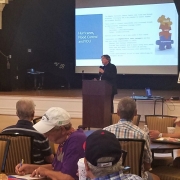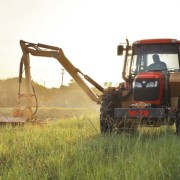Watersheds…Why You Should Care
A watershed is an area of land where water flows or “sheds” from the highest point to the lowest point on its way to a lake, canal, another waterbody, and eventually to the ocean. It not only includes water that flows across the land (surface water), but also includes water that flows through the land (groundwater). The size of a watershed can vary. It can be small such as a modest lake or it can encompass thousands of square miles inland.
You may be familiar with our local Lake Worth Lagoon Watershed which extends from the southeastern portion of Lake Okeechobee through Palm Beach County. Within our watershed, thousands of people live, work and play. This is important to note because when a portion of the watershed receives heavy rainfall the stormwater runoff from rooftops, backyards and roadways can travel through storm drains and canals to adjacent waterbodies. Along the way, the runoff may pick-up pollutants like fertilizers, pesticides, oil, or trash which can flow directly into the watershed causing poor water quality. Healthy watersheds provide critical services, such as clean drinking water, productive fisheries, and outdoor recreation that supports our economy, environment, and quality of life.
You can help protect the watershed by using landscape fertilizers and pesticides wisely. Apply them only when needed and during non-rainy days to prevent the chemicals from washing down storm drains and making their way into adjacent water bodies. Second, throw waste items in their proper containers like recycling bins or trash cans. Trash can easily make its way into our water bodies and in many instances the materials are not biodegradable. Third, pick-up pet waste and dispose of it properly. Pet waste and the nutrient load it produces is a contributor to local water pollution. Finally, help spread the word and let others know why we should care about the health of our watershed. You can find more information on our local watershed at www.epa.gov/waterdata/hows-my-waterway.






